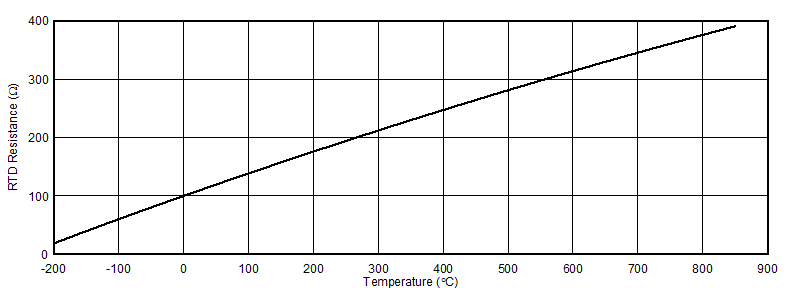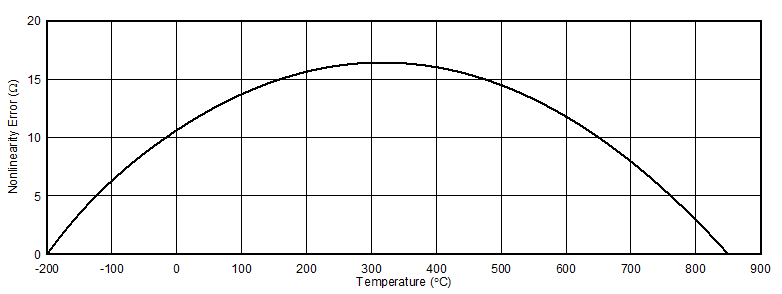SBAA275A June 2018 – March 2023 ADS1120 , ADS112C04 , ADS112U04 , ADS1147 , ADS1148 , ADS114S06 , ADS114S06B , ADS114S08 , ADS114S08B , ADS1220 , ADS122C04 , ADS122U04 , ADS1247 , ADS1248 , ADS124S06 , ADS124S08 , ADS125H02 , ADS1260 , ADS1261 , ADS1262 , ADS1263
- A Basic Guide to RTD Measurements
- 1RTD Overview
-
2RTD Measurement Circuits
- 2.1 Two-Wire RTD Measurement With Low-Side Reference
- 2.2 Two-Wire RTD Measurement With High-Side Reference
- 2.3 Three-Wire RTD Measurement, Low-Side Reference
- 2.4 Three-Wire RTD Measurement, Low-Side Reference, One IDAC Current Source
- 2.5 Three-Wire RTD Measurement, High-Side Reference
- 2.6 Four-Wire RTD Measurement, Low-Side Reference
- 2.7 Two Series Two-Wire RTD Measurements, Low-Side Reference
- 2.8 Two Series Four-Wire RTD Measurements
- 2.9 Multiple Two-Wire RTD Measurements
- 2.10 Multiple Three-Wire RTD Measurements
- 2.11 Multiple Four-Wire RTD Measurements in Parallel
- 2.12 Universal RTD Measurement Interface With Low-Side Reference
- 2.13 Universal RTD Measurement Interface With High-Side Reference
- 3Summary
- 4Revision History
1.1 Callendar-Van Dusen Equation
The relationship between platinum RTD resistance and temperature is described by the Callendar-Van Dusen (CVD) equation. Equation 1 shows the resistance for temperatures below 0°C and Equation 2 shows the resistance for temperatures above 0°C for a PT100 RTD.
The coefficients in the Callendar-Van Dusen equations are defined by the IEC-60751 standard. R0 is the resistance of the RTD at 0°C. For a PT100 RTD, R0 is 100 Ω. For IEC 60751 standard PT100 RTDs, the coefficients are:
- A = 3.9083 • 10-3
- B = –5.775 • 10-7
- C = –4.183 • 10-12
The change in resistance of a PT100 RTD from –200°C to 850°C is displayed in Figure 1-1.
 Figure 1-1 PT100 RTD Resistance From –200°C to 850°C
Figure 1-1 PT100 RTD Resistance From –200°C to 850°CWhile the change in RTD resistance is fairly linear over small temperature ranges, Figure 1-2 displays the resulting non-linearity if an end-point fit is made to the curve shown in Figure 1-1.
 Figure 1-2 PT100 RTD Non-Linearity From –200°C to 850°C
Figure 1-2 PT100 RTD Non-Linearity From –200°C to 850°CThe results show a non-linearity greater than 16 Ω, making a linear approximation difficult over even small ranges. For temperatures greater than 0°C, temperatures can be determined by solving the quadratic from Equation 2. For temperatures lower than 0°C, the third order polynomial of Equation 1 may be difficult to calculate. Using simple microcontrollers, determining the temperature may be computationally difficult and using a look-up table to determine the temperature is common practice.
Newer calibration standards allow for more calculation accuracy using higher order polynomials over segmented temperature ranges, but the Callendar-Van Dusen equation remains a commonly used conversion standard.